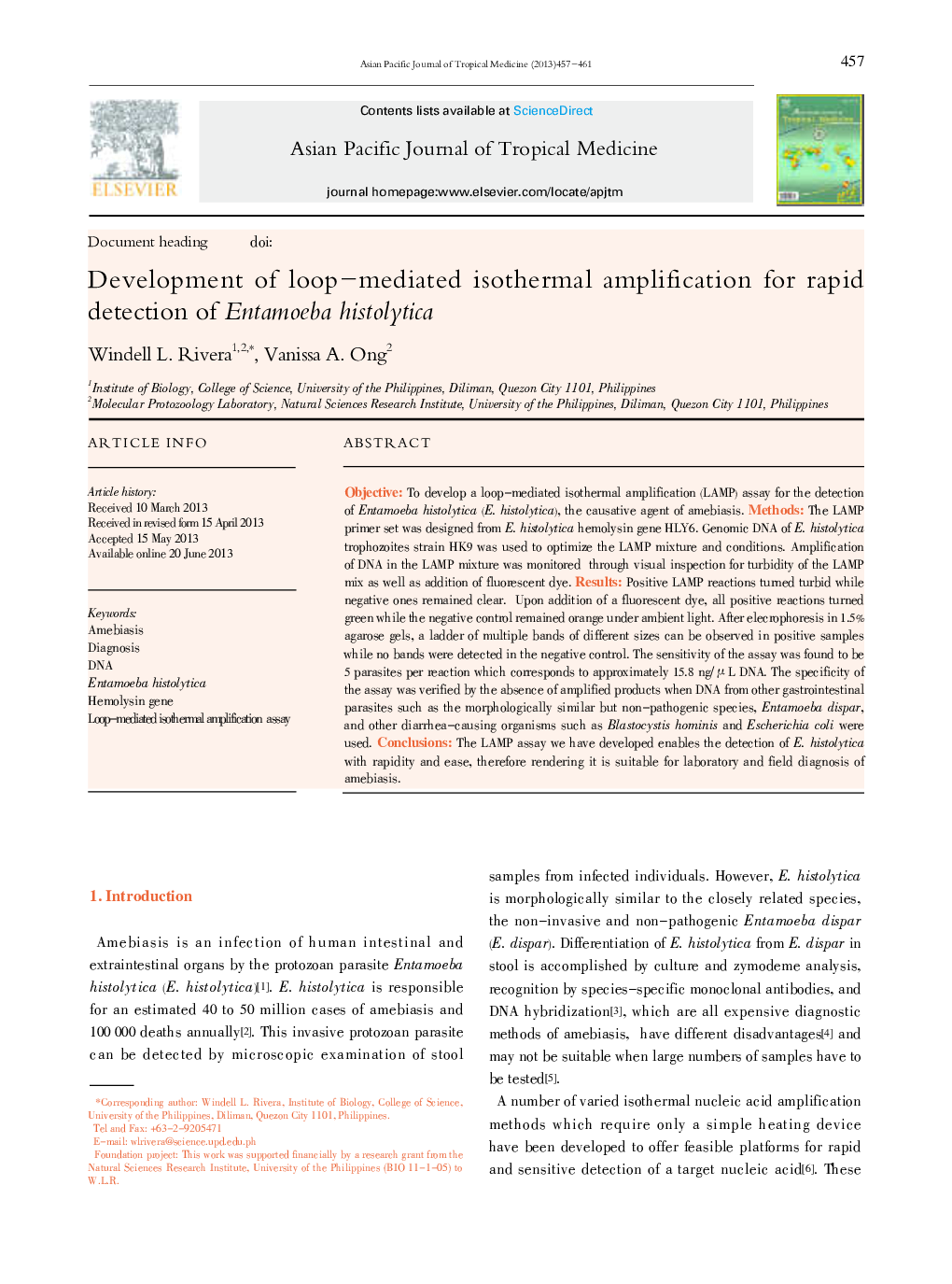| کد مقاله | کد نشریه | سال انتشار | مقاله انگلیسی | نسخه تمام متن |
|---|---|---|---|---|
| 3455866 | 1596040 | 2013 | 5 صفحه PDF | دانلود رایگان |

ObjectiveTo develop a loop-mediated isothermal amplification (LAMP) assay for the detection of Entamoeba histolytica E. histolytica, the causative agent of amebiasis.MethodsThe LAMP primer set was designed from E. histolytica hemolysin gene HLY6. Genomic DNA of E. histolytica trophozoites strain HK9 was used to optimize the LAMP mixture and conditions. Amplification of DNA in the LAMP mixture was monitored through visual inspection for turbidity of the LAMP mix as well as addition of fluorescent dye.ResultsPositive LAMP reactions turned turbid while negative ones remained clear. Upon addition of a fluorescent dye, all positive reactions turned green while the negative control remained orange under ambient light. After elecrophoresis in 1.5% agarose gels, a ladder of multiple bands of different sizes can be observed in positive samples while no bands were detected in the negative control. The sensitivity of the assay was found to be 5 parasites per reaction which corresponds to approximately 15.8 ng/μ L DNA. The specificity of the assay was verified by the absence of amplified products when DNA from other gastrointestinal parasites such as the morphologically similar but non-pathogenic species, Entamoeba dispar 39, and other diarrhea-causing organisms such as Blastocystis hominis and Escherichia coli were used.ConclusionsThe LAMP assay we have developed enables the detection of E. histolytica with rapidity and ease, therefore rendering it is suitable for laboratory and field diagnosis of amebiasis.
Journal: Asian Pacific Journal of Tropical Medicine - Volume 6, Issue 6, June 2013, Pages 457-461